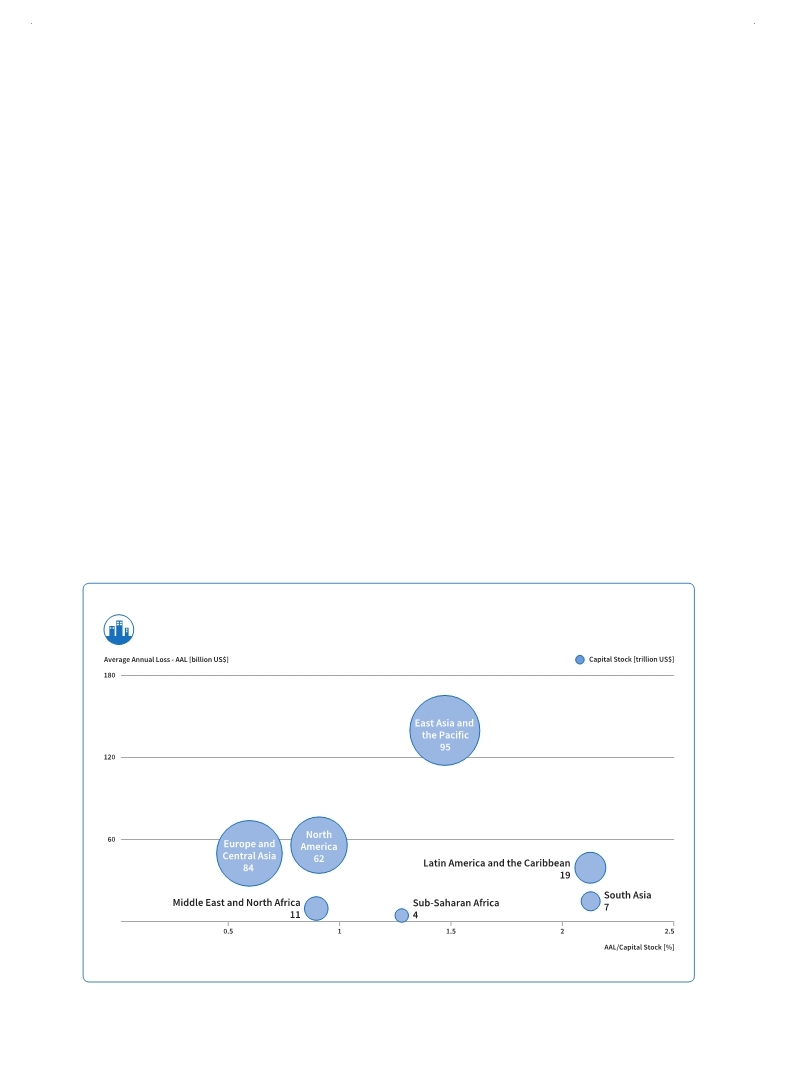 |
Global Assessment Report on Disaster Risk Reduction 2015
Making development sustainable: The future of disaster risk management |
 |
Global Assessment Report on Disaster Risk Reduction 2015
Making development sustainable: The future of disaster risk management |
|
|

60
Part I - Chapter 3
(Source: UNISDR with data from the Global Risk Assessment and the World Bank.)
Figure 3.6 Multi-hazard average annual loss in relation to capital stock by geographical region
The level of disaster risk in a country is therefore influenced not only by the absolute AAL but also by the way in which disaster risk could undermine the capacity for capital investment and social expenditure.
The value of the world’s capital stock12 is heavily concentrated in regions like East Asia and the Pacific, Europe and Central Asia, and North America.13 However, in relative terms, Latin America and the Caribbean would be expected to lose four times more of their assets each year compared to Europe and Central Asia and two times more compared to North American countries (Figure 3.6).14
When comparing different income groups, the AAL of high-income countries is around 25 times that of low-income countries. In relation to their capital stock, however, low-income countries could be expected to lose around five times more than high-income countries (Figure 3.7).
The relationship between AAL and capital stock is key to assessing the need for corrective disaster risk management, in other words investments to protect or to retrofit existing disaster-prone building stock. Countries with a very high ratio of AAL to capital stock in particular would need to invest in corrective risk management to avoid losing essential development assets. This is especially critical in countries which exhibit sluggish growth and low levels of capital investment and which would be challenged to replace capital stock lost in disasters.
Countries also need to consider the relationship between AAL and capital investment (gross fixed capital formation, or GFCF). In general, lowincome countries have less capacity for capital investment than high-income countries. However, disaster risk may represent a far higher proportion of that investment in low-income countries, challenging their potential for economic development.
|
 
Page 1Page 10Page 20Page 30Page 40Page 50Page 51Page 52Page 53Page 54Page 55Page 56Page 57Page 58Page 59Page 60Page 61->Page 62Page 63Page 64Page 65Page 66Page 67Page 68Page 69Page 70Page 71Page 72Page 73Page 74Page 80Page 90Page 100Page 110Page 120Page 130Page 140Page 150Page 160Page 170Page 180Page 190Page 200Page 210Page 220Page 230Page 240Page 250Page 260Page 270Page 280Page 290Page 300Page 310
|
|
 
|
 
|
